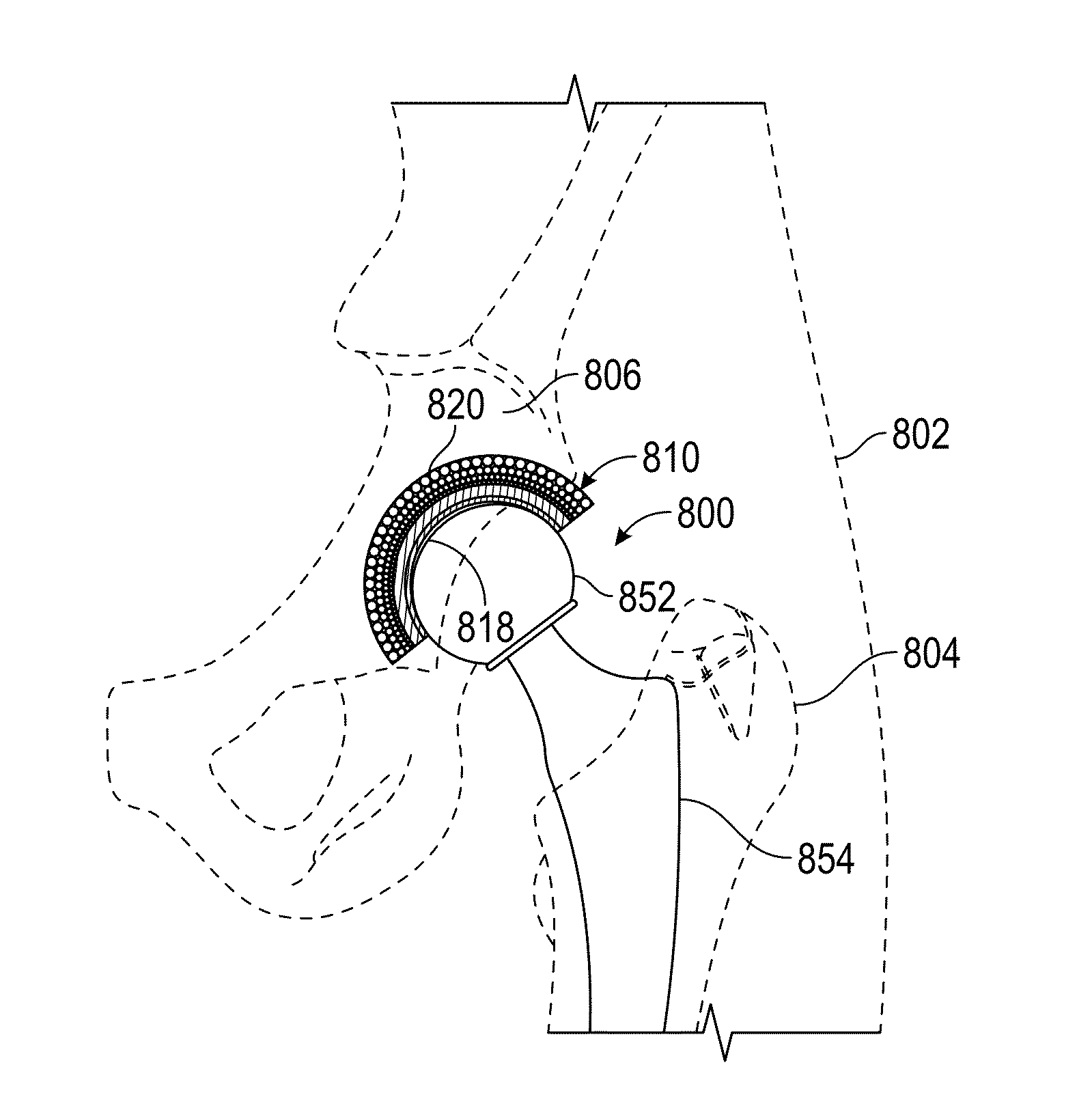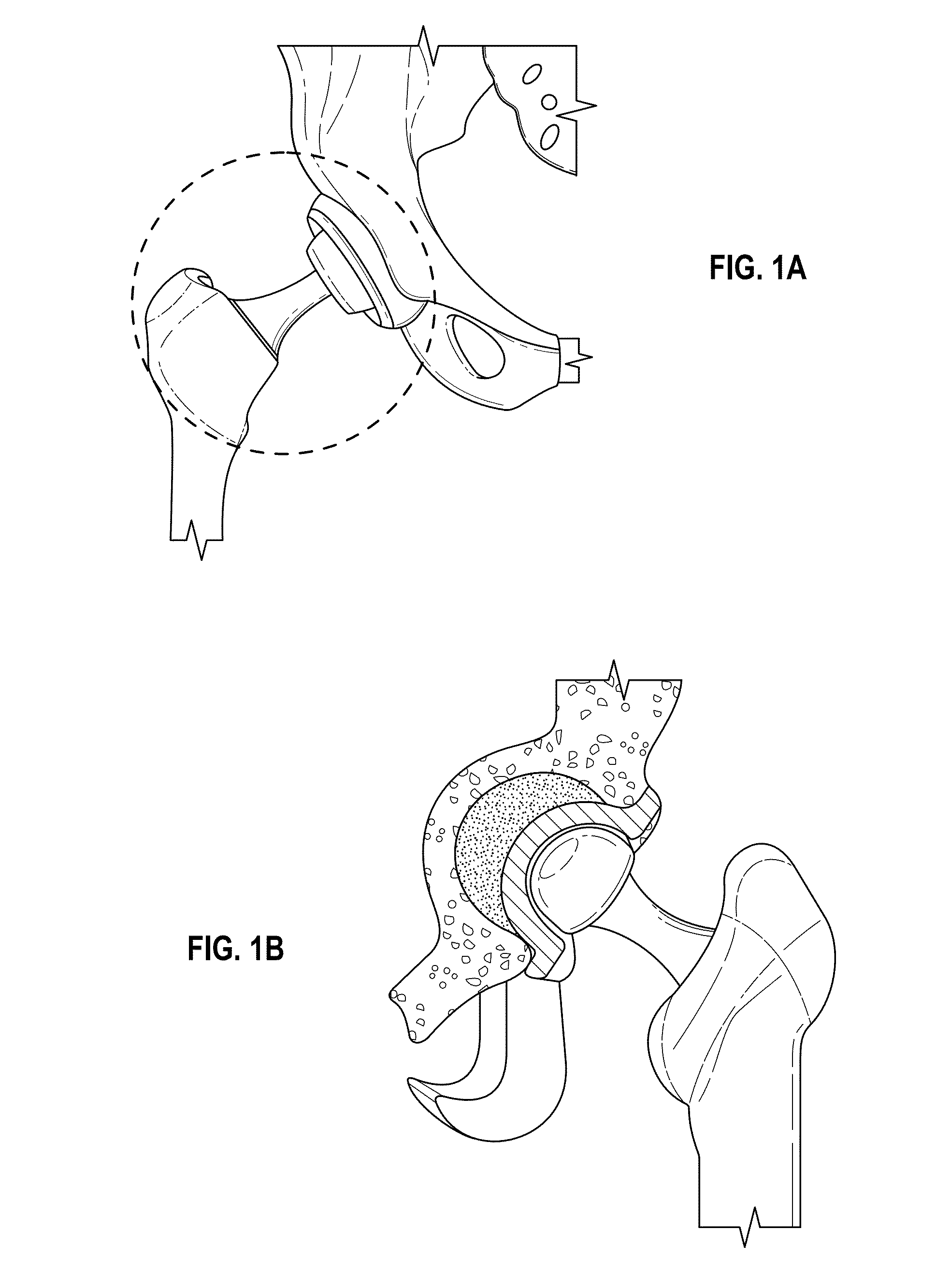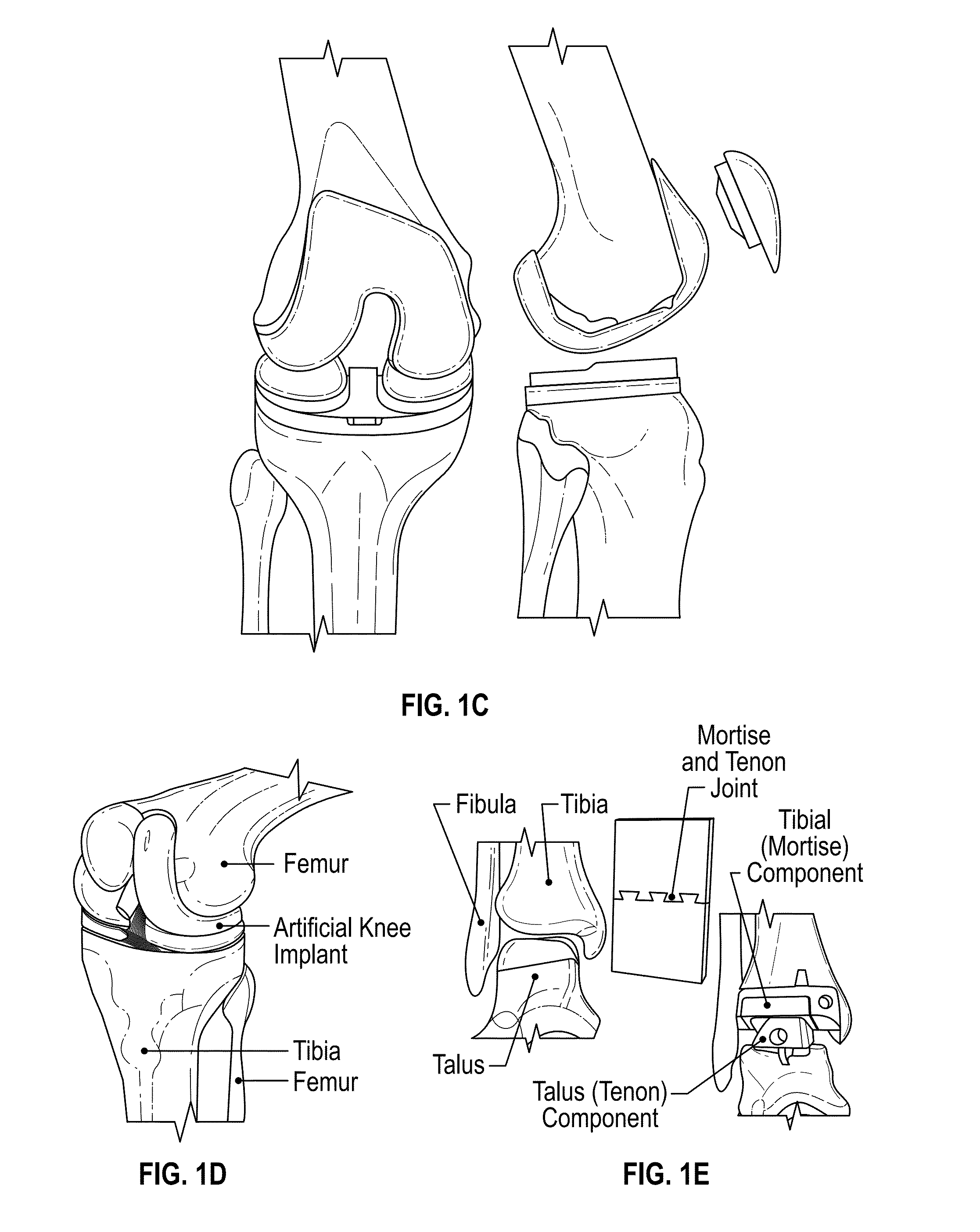Joint Replacement or Joint Resurfacing Devices, Systems and Methods
a joint replacement and joint technology, applied in the field of orthopedic joint resurfacing and/or replacement devices and systems, can solve the problems of affecting the overall efficacy and performance of the implant surface, and affecting the overall efficacy and performance. , to achieve the effect of advantageous isoelasticity and enhanced overall efficacy and performan
- Summary
- Abstract
- Description
- Claims
- Application Information
AI Technical Summary
Benefits of technology
Problems solved by technology
Method used
Image
Examples
Embodiment Construction
)
[0047]The present disclosure provides constructs, designs, materials, and methods of use and manufacture of orthopedic articulating devices (e.g., of orthopedic joint replacement or resurfacing devices), as well as protection of modular metallic junctions and fittings (e.g., taper fittings) thereof by obviating wear, fretting, corrosion (e.g., galvanic corrosion, crevice corrosion, inter-granular crevice corrosion, etc.), and / or particulate liberation between articulation members and modular couplings (e.g., tapered fitting) in total joint replacement and resurfacing devices (e.g., hip replacement device), such as due to relative motion, dissimilar metals, and the like. More specifically, the present disclosure relates to protection of articular joint surfaces, metallic modular junctions, joints and fittings, thereby supporting long term performance and load bearing with reduced risk of failure or complication due to a host of deleterious causes, as noted herein.
[0048]As noted abov...
PUM
| Property | Measurement | Unit |
|---|---|---|
| thickness | aaaaa | aaaaa |
| thickness | aaaaa | aaaaa |
| thicknesses | aaaaa | aaaaa |
Abstract
Description
Claims
Application Information
 Login to View More
Login to View More - R&D
- Intellectual Property
- Life Sciences
- Materials
- Tech Scout
- Unparalleled Data Quality
- Higher Quality Content
- 60% Fewer Hallucinations
Browse by: Latest US Patents, China's latest patents, Technical Efficacy Thesaurus, Application Domain, Technology Topic, Popular Technical Reports.
© 2025 PatSnap. All rights reserved.Legal|Privacy policy|Modern Slavery Act Transparency Statement|Sitemap|About US| Contact US: help@patsnap.com



